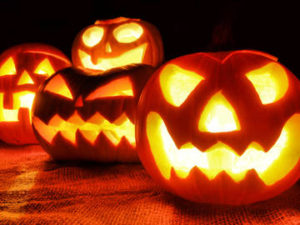It’s one of America’s most beloved holidays, but Halloween didn’t get its start in the United States. Travel back in time with us to learn what some of the very first ghostly celebrations looked like.
And as for the witches and wizards that you’ve come to associate with it? Yeah, they’re part of the story too! Here’s the true tale of how Halloween officially came to be.
Beets were used for carving jack-o’-lanterns
The holiday really started taking off in the middle of the 19th century, when a wave of Irish immigrants left their country during the potato famine. They popularized the celebration nationally with their new superstitions and customs, like the jack-o’-lantern. (Did you know that jack-o’-lanterns used to be carved out of turnips, potatoes, and beets?!) While kids didn’t trick-or-treat just yet, they did play plenty of pranks in the tradition of mischief-making.
Halloween joins two words
The word itself literally means “hallowed evening,” and was previously known to early European celebrators as All Hallows’ Eve. All Hallows’ Eve (Oct. 31) and All Saints’ Day (Nov. 1) both paid homage to saints (“hallows” = saints). The name was eventually shortened to “Halloween,” which we know and love to this day.
The pagan and Christian occasions hadn’t always been back-to-back, though. Up until the 7th century, All Hallow’s Eve fell on May 13. Perhaps in an attempt to offset the occasion with a religious celebration, Pope Boniface IV ultimately made the call to change the observance to its current Nov. 1 date.
Costumes helped scare people
Costumes have evolved over time. While they began as earnest tributes to saints, that tradition likely fell out of favor at some point…until young Scottish and Irish pranksters got the idea to dress up in scary-looking garb again as a way to spook unsuspecting neighbors. And just like that, thanks to these hooligans, Halloween costumes became scary, spooky, funny and creative all at the same time.
The calendar marks a significant time
Halloween falls on Oct. 31 because the ancient Gaelic festival of Samhain, considered the earliest known root of Halloween, occurred on this day. It marked a pivotal time of year when seasons changed, but (more importantly) observers also believed the boundary between this world and the next became especially thin at this time, enabling them to connect with the dead.
The early pagan holiday of Samhain involved a lot of ritualistic ceremonies to connect to spirits, as the Celts were polytheistic. Many believe the Celts celebrated in costume as a disguise against ghosts, enjoyed special feasts and made lanterns by hollowing out gourds (hence, the history of jack-o’-lanterns). Over time, as Christianity took over and the pagan undertones of the holiday were lessened, the basic traditions of the holiday remained a part of pop culture every year, they simply evolved and modernized.
Trick-or-treating has a lot of history
Many people were said to dress up as saints and recite songs or verses from door-to-door. Children would also go from door-to-door asking for “soul cakes,” a treat similar to biscuits. Technical note: Soul Cakes originated as part of the All Souls’ Day holiday on Nov. 2 but eventually became a part of Halloween night as the concept evolved into trick-or-treating.
According to History.com, one tradition in Scotland and Ireland involved people going door-to-door to sing, tell a joke or do a trick or other feat to get treats.
The candy-grabbing concept also became mainstream in the U.S. in the early to mid-1900s, during which families would provide treats to children in hopes that they would be immune to any holiday pranks.
Media helped Halloween spread
History.com reports the comic strip Peanuts featuring characters in costumes, advertising campaigns from candy companies and a Disney short film featuring Donald Duck and his nephews were key factors in helping the event take off.
Americanizing Halloween
By the end of the 1800s, more communities pushed for a secular (and safer) set of rituals. People started holding Halloween parties that emphasized games, fall food and costumes over witchcraft and troublemaking.
Trick-or-treating skyrocketed in popularity by the 1950s, when Halloween became a true national event. Today, over 179 million Americans celebrate the holiday — and spend about $9.1 billion on it per year, according to the National Retail Federation.


Leave a Reply